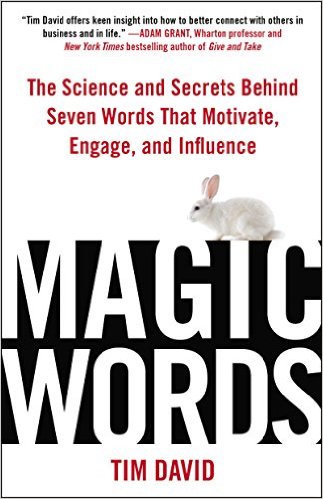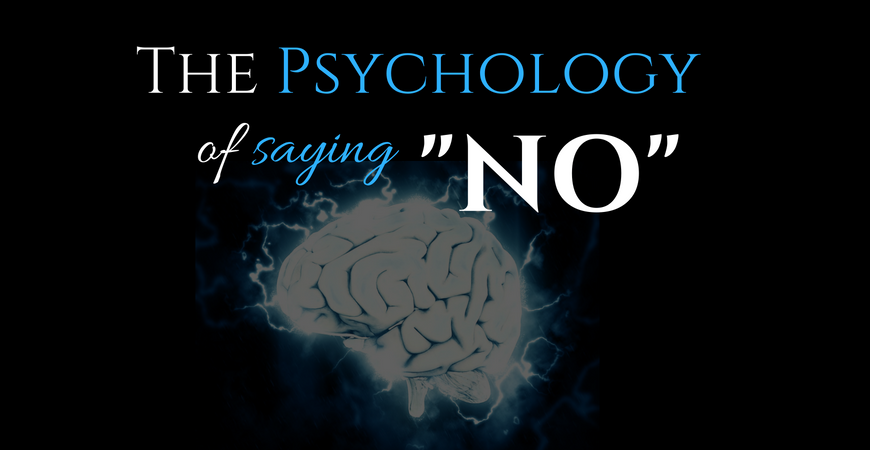[vc_row][vc_column width=”2/3″][vc_column_text css=”.vc_custom_1511913625429{padding-bottom: 15px !important;}”]Saying no is important to sobriety, but why does it taste so bad coming out of our mouths? And sometimes it can even feel like a knife when people say it to us. Here’s why, and how you make it sound much better…
I’m reading a book called Magic Words, by Tim David, and he does a great job explaining the psychology behind the words we use and why it effects us so much. The word no, he says, “has prevented sales calls from being made, pay raises from being requested and women from being asked out for as long as there have people on this planet to worry about such things.” I can definitely relate to all three of those.

This is because humans don’t like rejection. For example, the number one fear among people is public speaking – which David describes as “the fear of public rejection.” Since we depend on each other for survival, it makes sense that being alone or rejected is a common fear. So when your by yourself in front of a group of people, it can seem like it’s you against them. And no one wants to go to battle alone!
But sometimes saying no to, or rejecting a group is the best thing for us, because the crowd or majority doesn’t necessarily have our best interests in mind. For example, maybe you’re underage or sober and you’ve come to this article from our blog post about saying no when someone offers you a drink. So how do you say no to something without rejecting the person or hurting their feelings? Can you say no and still be liked, or part of the group?
Well, yes! In the Magic Words, David gives 4 ways to do it…
- Give Yourself Time
- The “Yes Sandwich”
- Give a Reason or Two Why
- Change Your Language
Give Yourself Time
Depending on if you’re a “yes person” or a “no person,” you may just blurt out a yes or no before you think about the question. Or maybe you think more about the other person’s feelings than your own, so you always say yes to others. Just by simply saying, “not right now” or “let me think about it” can soften the blow of a straight up “NO!”
The “Yes Sandwich”
Since no is hard for people to swallow, try putting it in between some yeses to help it go down easier. Since I’m sober, I refuse a lot of drinks. Here’s how I use this technique…
Friend – “Jake! Here you go man, have a drink with me!”
Me – “You’re super generous! I actually don’t drink, but how about we shoot some pool?!
My compliment of being generous serves as the first “yes” to them. Next, I tell them “no” by saying I don’t drink, but quickly add a “yes” of positivity by asking them to play pool. This gives the person who asked you a question two positive responses and just one negative one, and since the last thing I said was positive, they’re more likely to leave with a good feeling.
Give a Reason or Two Why
Instead of just rejecting their request, giving a reason shows that you’ve thought about their request. If you don’t have a reason right away, use the Give Yourself Time technique and then take a moment to collect your thoughts.
Many people will understand and relate to your reasoning because they have similar values and priorities. For example, saying no because you already made plans, or want to spend time with your family shows that you are dedicated or value time with the family. Now they know it’s not personal; they probably would have chosen the same thing.
Change Your Language
This means that you can simply avoid saying the word “no,” and use other words that are easier for people to hear. Things like, “Not right now,” “I’d love to but I can’t,” “I’d rather not,” or “Sorry I just can’t commit to that.” Although this one is the easiest to use, I think that the other three are more genuine. But they require a little more courage and maybe even practice.
Just like anything worthwhile, saying “no” is difficult. But I hope this article helps you get better at it, because the relationships you create, save and nourish will be effected by your ability to say no politely and preserve the other person’s feelings.
Saying “yes” is just as important too! Life should be an adventure shared with as many people as possible. So when you want to stay home in your PJs when your friends ask you to go sledding in the freezing cold… get out of your comfort zone and make some memories 🙂
…And I take ZERO credit for the content in this article! It’s all Tim David. So if you want to learn more about how language influences us, I recommend reading his book “Magic Words: The Science and Secrets Behind Seven Words That Motivate, Engage, and Influence.”
[/vc_column_text][/vc_column][vc_column width=”1/3″][vc_single_image image=”3745″ img_size=”large” alignment=”center” onclick=”custom_link” img_link_target=”_blank” link=”http://eepurl.com/daOGbr”][vc_video link=”https://www.youtube.com/watch?v=hi5uQdumJFY” align=”center” css=”.vc_custom_1511913671972{margin-top: 20px !important;margin-right: 20px !important;margin-bottom: 50px !important;margin-left: 20px !important;}” title=”Videos”][vc_single_image image=”3742″ img_size=”large” alignment=”center” onclick=”custom_link” img_link_target=”_blank” title=”Facebook Group” link=”https://www.facebook.com/groups/1476425295726770/”][vc_column_text]

